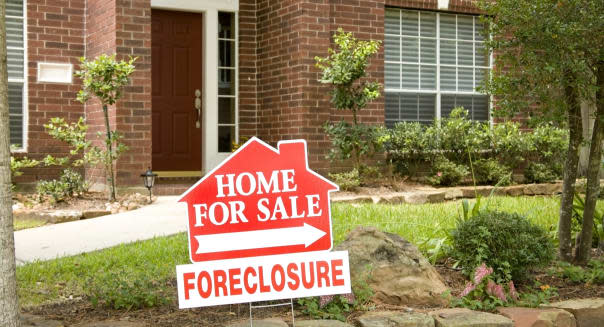Common Loan Option May Lead to the Next Housing Crisis

The collapse of the U.S. housing market in the mid-2000s led to the nation's worst financial crisis in many decades. Yet even though the years of scrutiny and regulatory efforts that followed it have made the financial system a lot safer, there's still a ticking time bomb in the home-loan market. It's a problem that even some lenders see as potentially triggering some of the same issues for borrowers that led to the housing bust.
Mortgages vs. home-equity lines of credit
The primary problem that plagued homeowners in the 2000s came from mortgage loans that proved impossible for them to repay. In far too many cases, homeowners got mortgages with low introductory teaser repayment rates, allowing them to qualify for larger loans because of their lower upfront payments. However, many of these mortgages had provisions that called for sizable increases in monthly payments within a few years.
As long as the housing market was hot and prices kept rising, homeowners had the option of selling those properties before the higher payments kicked in, getting them out from under the mortgage and reaping a sizable capital gain in the process as well. But when home prices collapsed and the market was flooded with homes, those who had taken those mortgages found themselves underwater, with no way to sell, and frequently no way to handle their loan payments.
In response, regulators have targeted negative-amortization and interest-only mortgages. Lenders now must require borrowers to demonstrate their ability to repay those loans even after reset-provisions take effect and boost monthly payments.
Recently, Wells Fargo (WFC) identified a lingering problem with another home-financing option, the home-equity line of credit.
It's time to pay the piper
The structure that Wells, Countrywide, Bank of America (BAC), JPMorgan Chase (JPM), and other major lenders generally used with home-equity lines during the housing boom was to allow customers to borrow up to the credit-line limit at will, and they were only required to repay interest during the first 10 years the line was outstanding. After that 10-year mark, banks would require that borrowers not just repay the interest on the outstanding balance but also make principal payments as well.
%VIRTUAL-WSSCourseInline-963%With many home-equity lines of credit approaching the 10-year milestone, banks now worry about the impact of those much-higher monthly payments on borrowers. Already, Wells Fargo has moved most of its customers toward home-equity lines of credit that require early repayments of principal. According to reports, Bank of America and JPMorgan Chase are also looking at modified home-equity lines that would include earlier principal-repayment provisions.
By making these changes, banks hope that customers will get used to relatively flat payments based on the amounts they have outstanding, rather than facing the sticker shock that an abrupt change in repayment terms during the course of the home-equity line of credit can cause.
Nevertheless, it's important for borrowers to understand that home-equity lines of credit are much different than traditional loans. Because of the way that home-equity lines are set up, borrowers generally have the ability to tap those lines at will, allowing their principal balance to fluctuate upward and downward depending on their needs for withdrawals and their ability to make payments.
Even if home-equity lines require principal repayment, only those who've already maxed out their lines will have to figure out how to get money from elsewhere to make the resulting higher monthly payments. Others will still be able to return to their home-equity lines for financing, effectively circumventing the new requirements and putting off the day of reckoning further down the road.
It's still on you to act responsibly
Efforts from banks and regulators to control the mortgage and home-loan market are commendable as a way to fight the threat of a future financial crisis. In the end, though, it'll take responsible money management from borrowers to ensure that home-equity lines of credit don't create the same trap for the unwary that ordinary mortgages did in the run-up to the housing bust.
You can follow Motley Fool contributor Dan Caplinger on Twitter @DanCaplinger or on Google+. He owns warrants on Bank of America, JPMorgan Chase, and Wells Fargo. The Motley Fool recommends Bank of America and Wells Fargo. The Motley Fool owns shares of Bank of America, JPMorgan Chase, and Wells Fargo and has the following options: short June 2014 $50 calls on Wells Fargo and short June 2014 $48 puts on Wells Fargo. Try any of our newsletter services free for 30 days.

